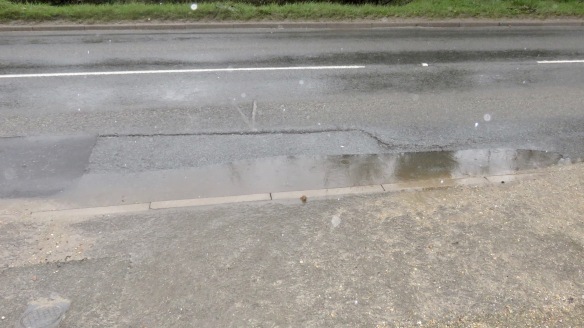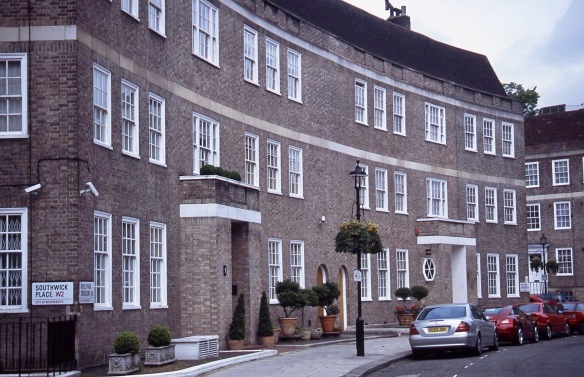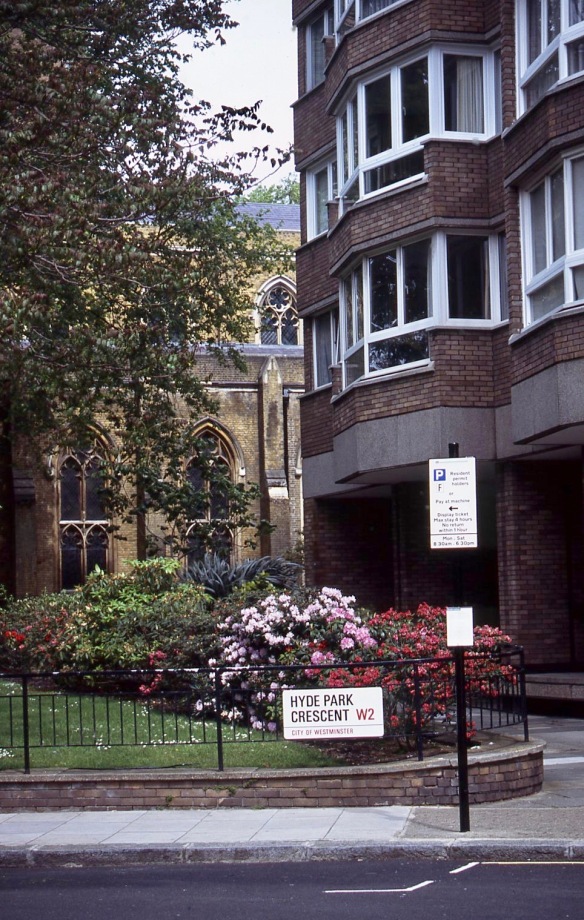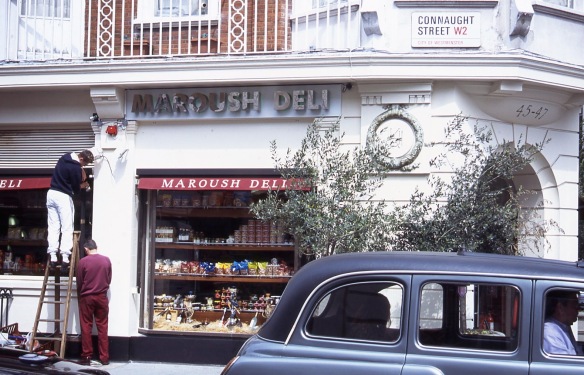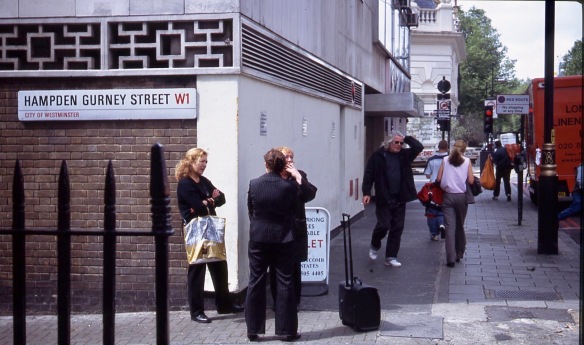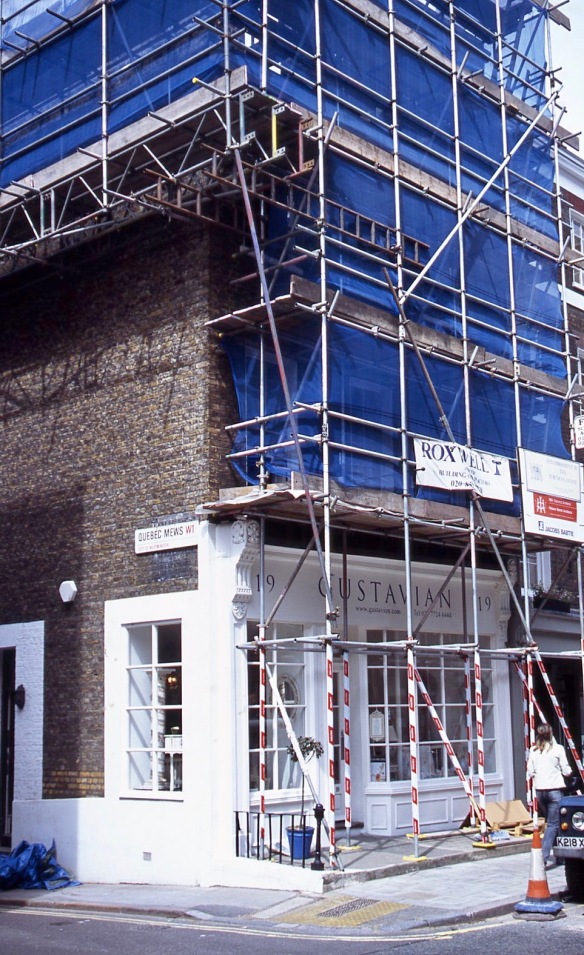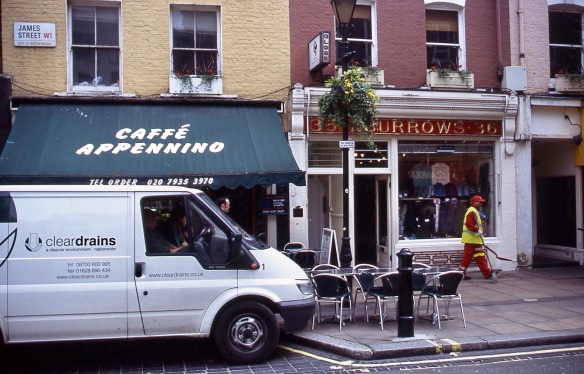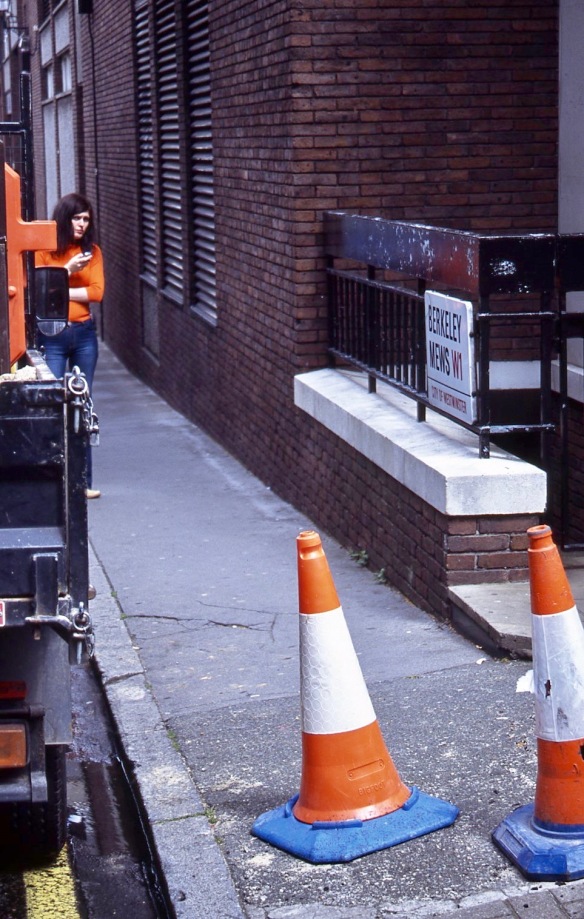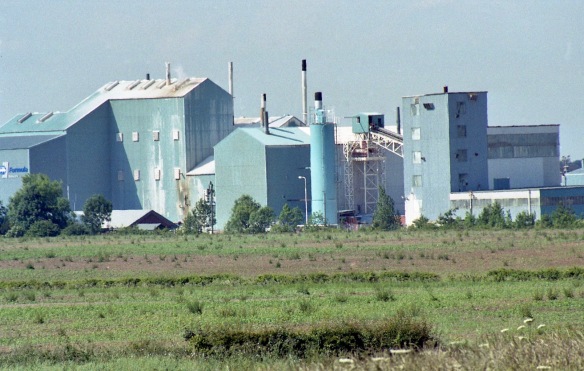CLICK ON IMAGES TO ENLARGE. REPEAT IF REQUIRED.
“Treasure Island”, “Gulliver’s Travels”, and “The Wind in The Willows”, are just three long-term classics that have been marketed as children’s books. I keep no such distinction on my library shelves. That is probably why

Penelope Lively’s “Going Back” stands alongside Mario Vargas Llosa’s “In Praise of the Stepmother” among my novels.
I finished reading Ms Lively’s short novel a couple of days ago. I can offer no better review than to reproduce the author’s preface to the Penguin editor of 1991. She writes: “Going Back was first published [in 1975] as a children’s book. I suppose that was what I thought I had written. Reading it now, I see that it is only tenuously so; the pitch, the voice, the focus are not really those of a true children’s book. Looking at it fifteen years later, I see it quite differently, and recognise it as a trial run for preoccupations with the nature of memory, with a certain kind of writing, with economy and allusion. I was flexing muscles, I think, trying things out, and it was only by accident that the result seemed to me and to others to be a book primarily for children. It has been in print ever since, but has led a shadow-life, I suspect, skirted by children properly way of what perhaps was never an apt offering anyway, and unknown, to others who might have found something in it. When a new addition on the adult list was suggested, I thought this a reasonable idea.’
Market it for whomever you like, it is splendid example of reminiscing into a well-remembered wartime childhood as a vehicle for exploring the author’s themes.

I overslept this morning enough for Jackie to get at my untidy desk still bearing a layer of fine dust from the installation of the new kitchen. This she cleaned, tidied, and polished to a level to make me frightened to spoil it. The items now perched on my printer and scanner were rather scattered around the desk. Well, I knew where everything was. Now, like polishing a new car at least once, I will just have to sort the piles and maintain its current condition. Even the keyboard and mouse are shiny, and, when scanning old slides and negatives, I will now know which are blemishes in the scanned material needing retouching, and which are globs of something unpleasant on the screen.
The history of The Church of St John the Baptist, Boldre, can be seen on my blotter, which contains more coffee than ink. In yesterday’s post I mentioned that we would need more visits to supplement the information given there. With another day of unrelenting rain we decided on going back to seek out
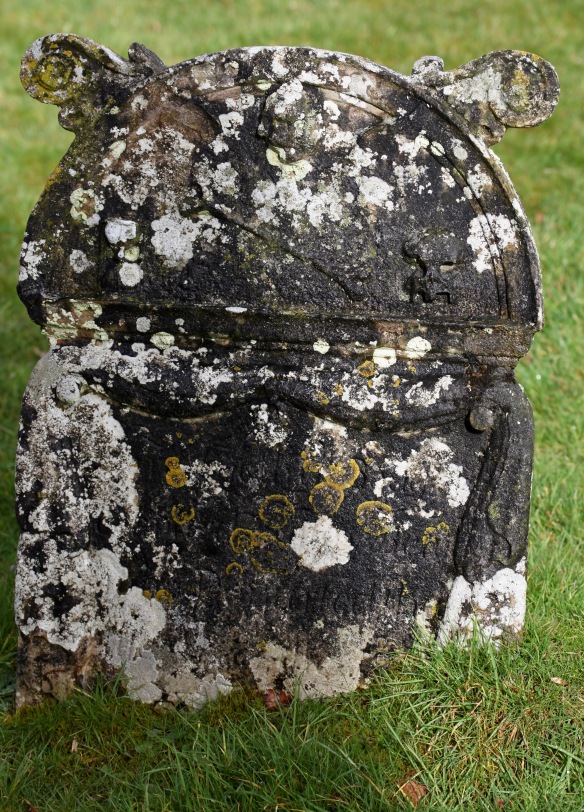
the oldest named tombstone in the graveyard. This is that of Edward Watts, who died on May 12th 1698. After all it wouldn’t matter much if that was wet, would it? Now, far more lichen obscures the inscription than on the photograph that illustrates the booklet, which directed visitors to take twelve paces from the East end.

The East Window helped me locate the stone that I had missed on a previous visit focussing on the graveyard. This, in 1967, was designed by Alan Younger of London, in memory of two generations of de Mowbray Royal Naval officers. It was fortunate that the artist lived until 2004, because he was able to restore the piece after someone had thrown a brick through it in 1995.
I had a pleasant conversation with the Revd Canon Andrew Neaum, who was, with two helpers, working on decorations.

Perhaps we experienced divine intervention when the rain lashing the windscreen on our arrival, suddenly ceased, and

lichen covered trees opposite visibly brightened.

Nevertheless, rainwater streamed down Church Lane,
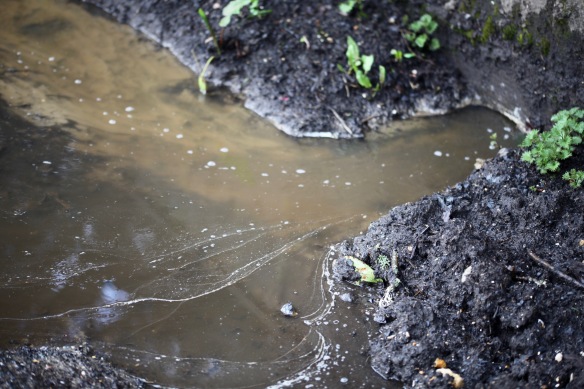
ran under a fence,

waterlogged the garden at the bottom of the hill,
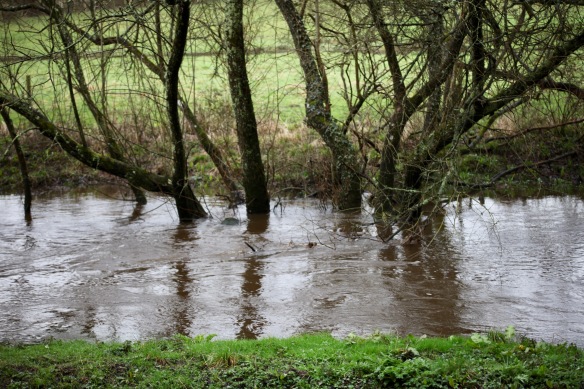
and swelled the river running through it.

Just like that on the gravestone and the trees, lichen clung to an elderly rustic fence opposite.
This evening we dined on Jackie’s superb spicy pasta arrabbiata with which I drank Paniza gran reserva 2009
